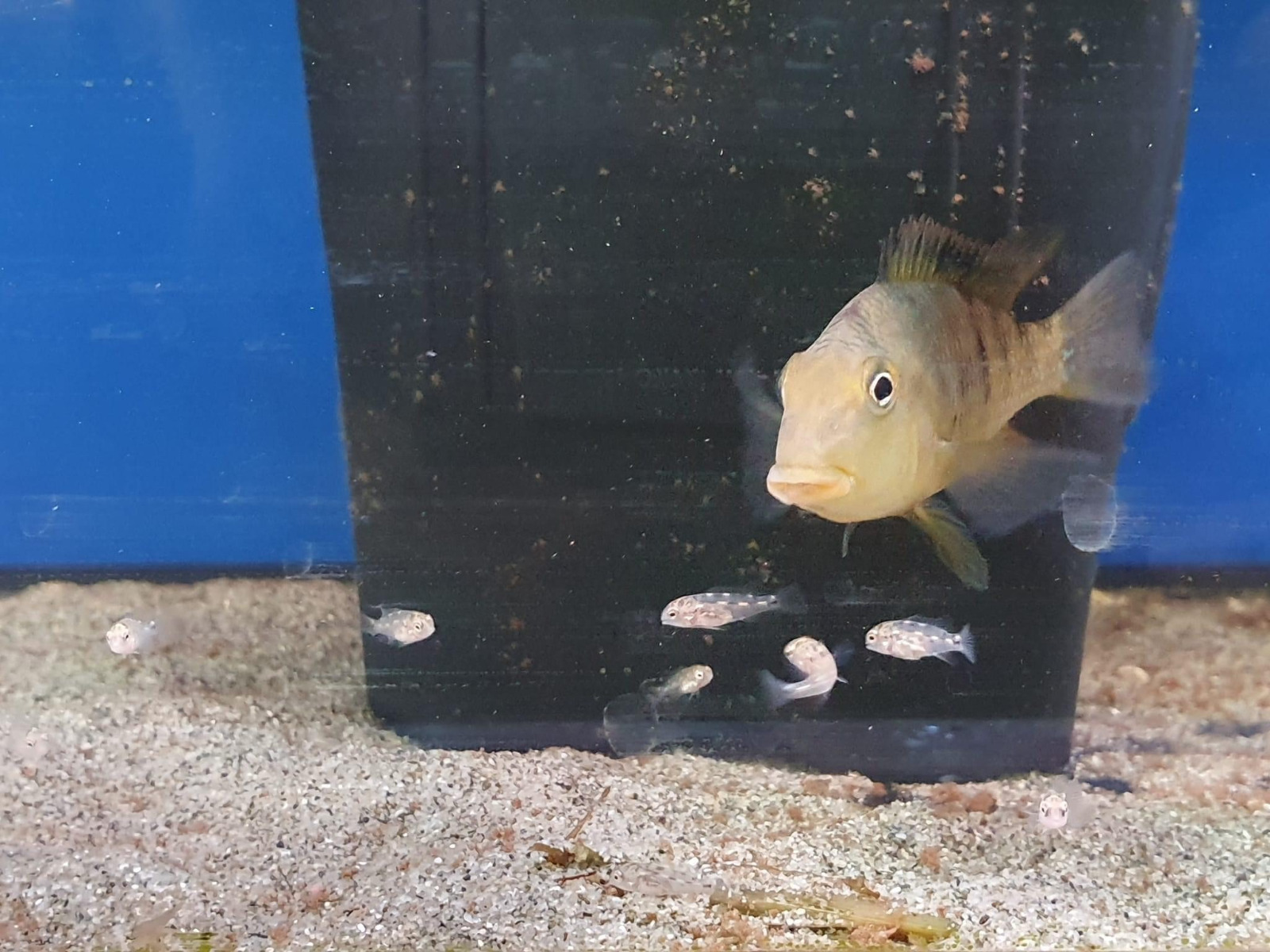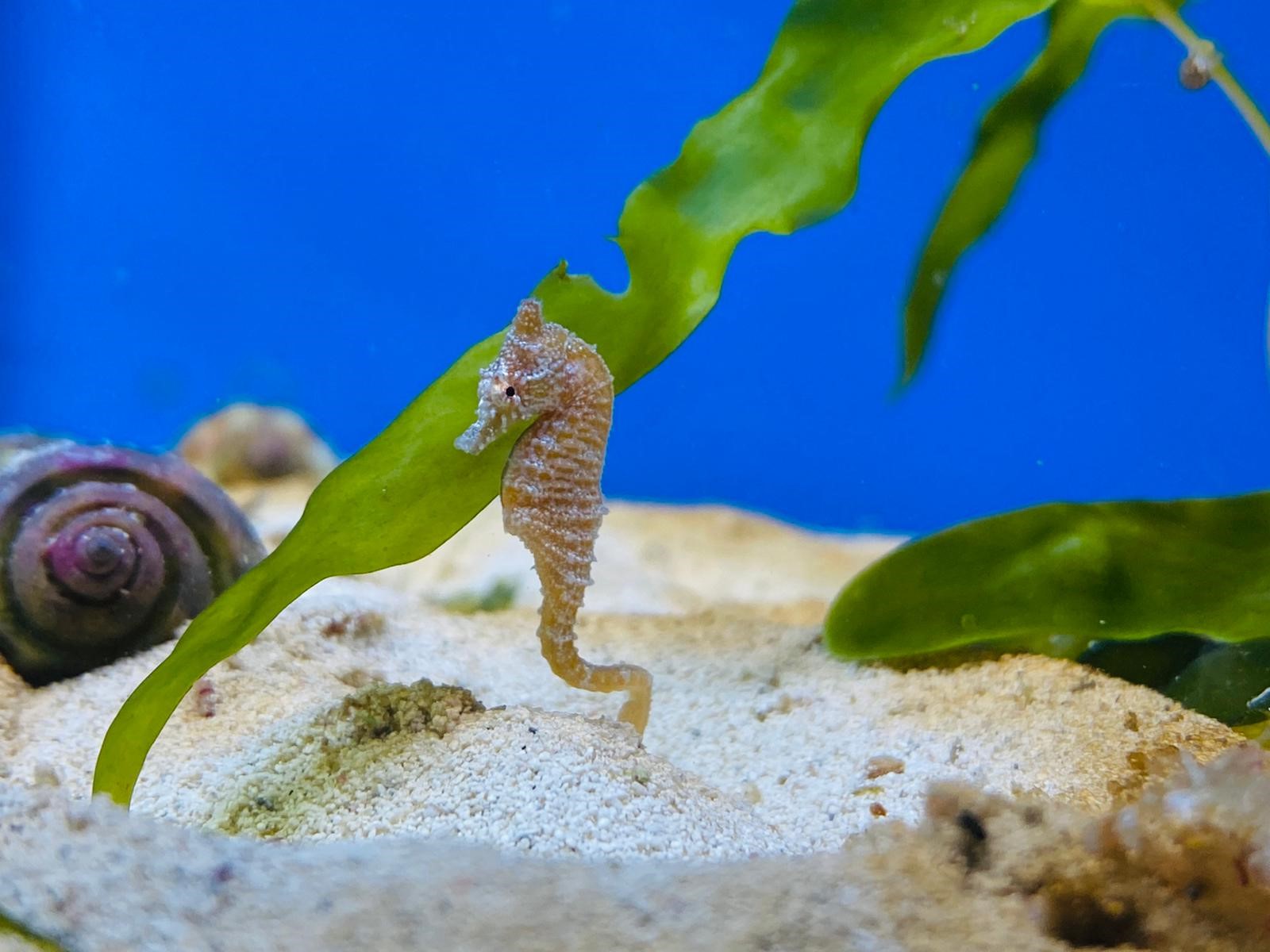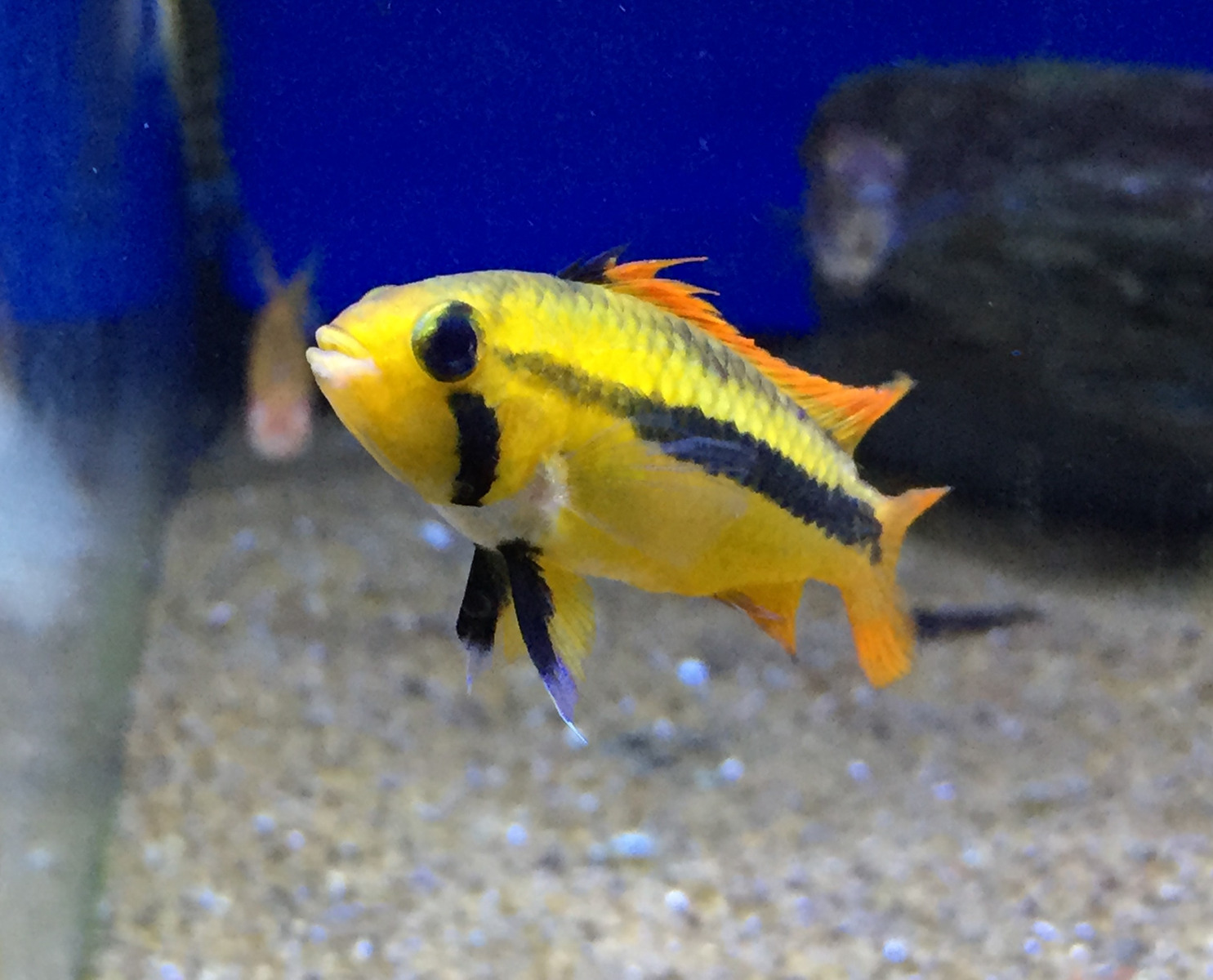Mum's Net
Mothers come in all shapes and sizes, as you might expect there’s a lot of diversity when it comes to aquatic motherhood, but all these strategies seem to work. The world is full of fish and you don’t see many in therapy.
Piscine parenthood tends to follow two broad styles, either the numbers game where large quantities of eggs are scattered to face an uncertain fate, or the more caring approach where a smaller number of eggs are tended and investment in each youngster is far higher.
Some of the best examples of the hands off approach are perhaps more familiar as menu options, with Cod laying an almost unimaginable six million eggs that are just broadcast into the ocean to overwhelm the many threats that they face. Of these millions, only two fish need to make it to adulthood for the population to remain stable.
Away from the mind-boggling numbers, Goldfish are a good example of a similar principle on a smaller scale. The goldfish in your pond will usually start spawning when the temperature reaches about 15C, with a spawning chase leading to hundreds of eggs being deposited in aquatic plants or blanketweed (it’s got to be good for something!). Egg scattering fishes often get the munchies after their exertions and will sometimes snack on their own eggs. No card for you goldfish mum!
The next stage up from this borderline abandonment is selecting a safer place to deposit eggs, often involving the construction of a nest of some sort. Here the wise mothers can often leave parental care to the father of their offspring, and we see a number of examples of this behaviour in species such as Stickleback, Siamese fighting fish and Bristlenose plecs. Not only has most of the parental care been left to the males, the females are actively courted and seduced into using his nest. These hands-on dads are probably best dealt with in a Father’s Day version of this type of article, but the prospective mothers are very choosy and do their best for their young by selecting a mate with the skills and looks to ensure the best future for their offspring.
This female Cockatoo cichlid wears a bold pattern while breeding
It's hard to talk about fish motherhood without mentioning cichlids. These diverse and clever fishes have a number of maternal tactics and some of the most devoted mums. Familiar forms such as Angelfish will go through an elaborate spawning ritual. Males and females choose one another from a shoal, their eyes meeting across a crowded tank before a bond is formed prior to a significant investment in their young. This type of cichlid mother is a domestic goddess, and cleans the spawning site, tends the eggs and leads the fry while their usually larger father guards the territory.
In a number of dwarf cichlids, the large males will have a territory that includes multiple females. These single mothers are often very feisty and will drive away any perceived threat to their young – often including their father, who finds himself on the angry end of a much braver female. His larger size may be nature’s way of enabling him to cope with an intimidating mate and he continues to provide remote support, the cichlid version of the CSA sees him chasing away rival males and manageable threats to his hard working harem. Like many cichlids, these mothers usually adopt a striking high-contrast pattern that quickly teaches any neighbours to stay well away.
Even more independent, mouthbrooding mothers are often single parents from the outset, males having little input past the spawning act itself. Many of these dedicated mums can’t feed properly with a mouth full of eggs and face a hungry couple of weeks until their young are old enough to leave the shelter of her mouth. Although some of them release their young in carefully chosen spots to fend for themselves, others continue to provide shelter and protection until the babies are fully independent. All of them deserve more than flowers from the local garage.

Female Redhump eartheaters look after their young alone for weeks
Not all fish lay eggs and some give birth to fully formed fry, ready to face the world alone. At the other end of the maternal scale, these mothers provide safety and in some cases sustenance for their small brood before sending them on their way. It’s part of the reason why species such as Guppies are so successful, as they give birth every four weeks or so to tiny miniature fish that have already passed their most vulnerable stage of development.
Perhaps one of the smartest mums of all is the Seahorse, she has a lasting relationship with the father of her offspring and he carries her eggs in a brood pouch until giving birth to them. This frees her to recover more rapidly from the strain of producing a clutch and ripen her next batch of eggs. It’s a triumph of nature’s efficiency but the fact that they still court one another and dance regularly shows that she knows how to keep the romance alive. She might not be hands on, but she does the best to give them a good future.

Seahorse mums may not be hands-on, but they are part of a great team



